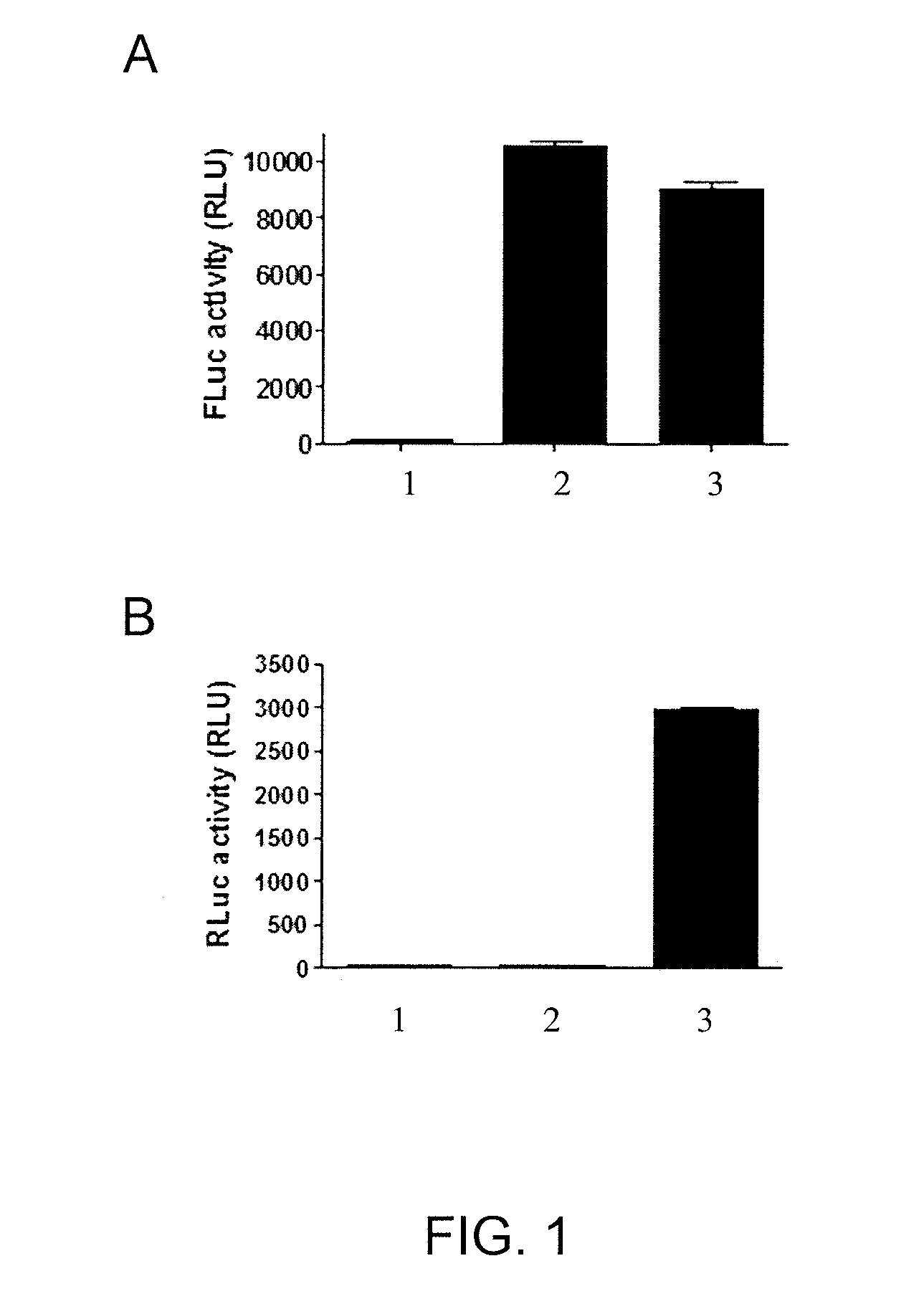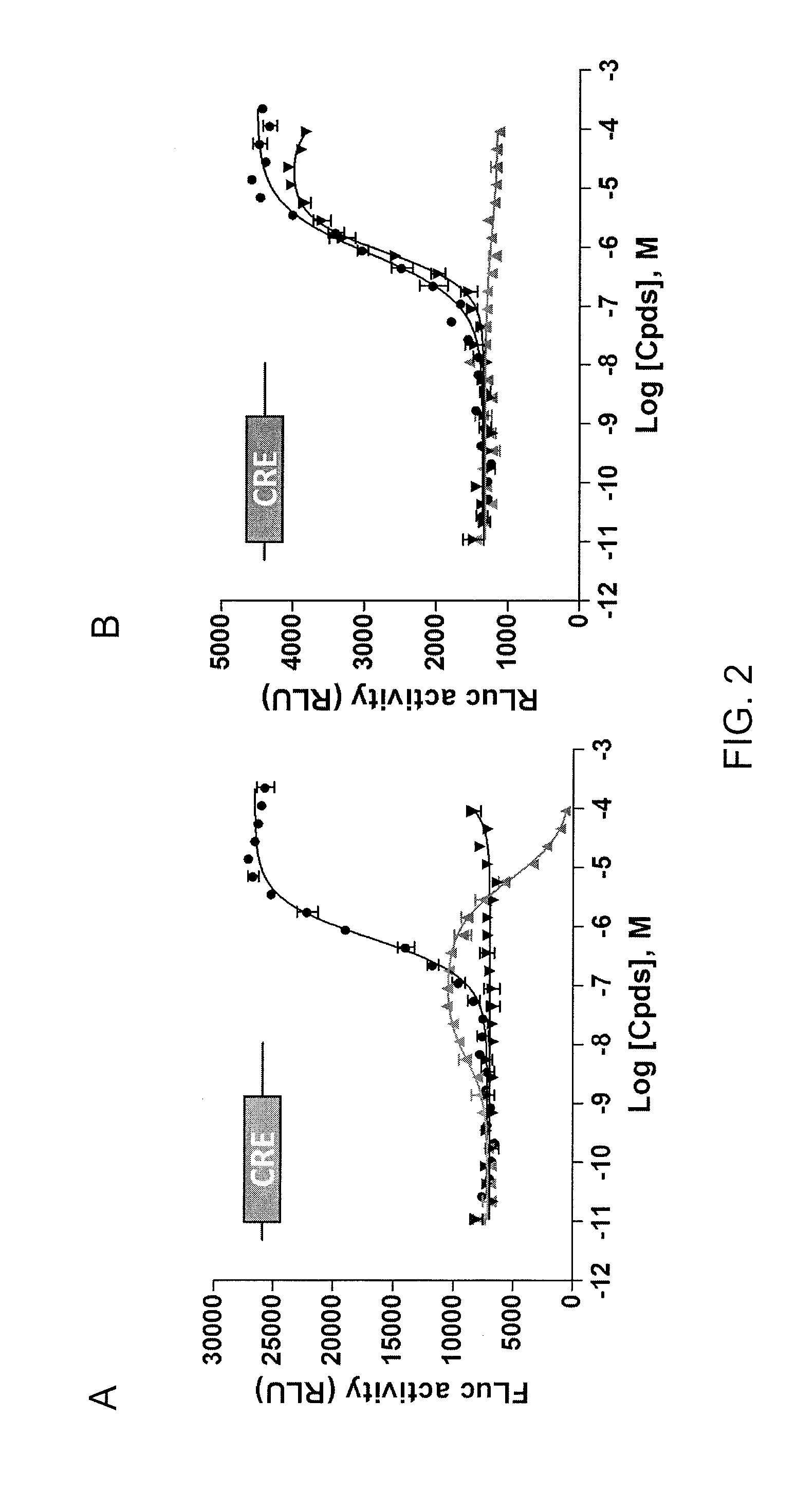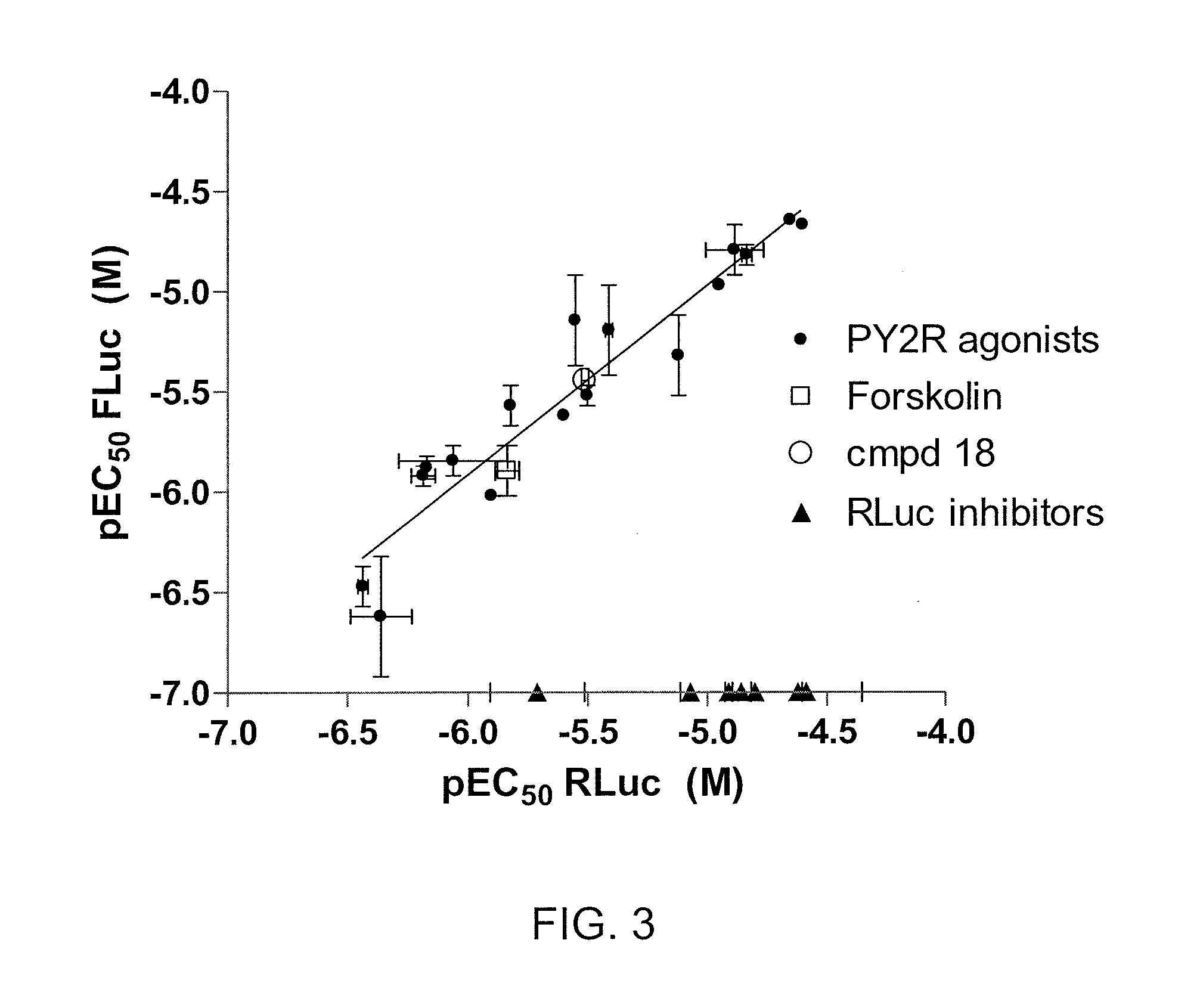Coincidence reporter gene system
a reporter gene and coincidence technology, applied in biochemistry apparatus and processes, microorganisms, organic chemistry, etc., can solve problems such as affecting sensitivity, misleading data, and obstacles to the successful use of reporter genes in cell-based assays
- Summary
- Abstract
- Description
- Claims
- Application Information
AI Technical Summary
Benefits of technology
Problems solved by technology
Method used
Image
Examples
example 1
[0090]This example demonstrates the ability of an assay using cells expressing FLuc-P2A-RLuc to discriminate between forskolin (FSK)-activated adenylyl cyclase signaling and signals mediated by inhibitors of FLuc and RLuc.
Generation of FLuc-P2A-RLuc Constructs
[0091]The DNA oligonucleotides used are listed and depicted in Table 2. Nucleotides encoding Gly-Ser-Gly were added to the 5′ end of the high ‘cleavage’ efficiency 2A sequence from porcine teschovirus-1 (P2A) peptide (SEQ ID NO: 1). The pGL3-Control vector comprised an SV40 promoter operatively linked to a nucleotide sequence encoding FLuc. The pGL3-Control vector (Promega, Madison, Wis.) was used as the backbone to generate the SV40-driven FLuc-P2A-RLuc construct (pCI-6.20). First, oligonucleotides KC026 and KC027 (Integrated DNA Technologies, Skokie, Ill.) were used to remove the stop codon and add an EcoRI site by QUIKCHANGE II Site-Direct Mutagenesis Kit (Agilent Technologies, Wood Dale, Ill.) to create the construct pCI-6....
example 2
[0105]This example demonstrates the bioluminescent output of cells expressing a 4XCRE-driven FLuc-P2A-emGFP construct.
[0106]A 4XCRE-driven FLuc-P2A-emGFP construct was generated as follows. All DNA oligonucleotides used to generate this construct are listed and depicted in Table 7. Nucleotides encoding Gly-Ser-Gly were added to the 5′ end of the high ‘cleavage’ efficiency 2A sequence from porcine teschovirus-1 (P2A). First, pCI-6.24 was cut using the EcoRI site to remove the P2A-RLuc open reading frame (ORF). Second, by using VIVIDCOLORS pcDNA-6.2 / C-emGFP-DEST vector (Life Technologies) as the template, a Gly-Ser-Gly-P2A-emGFP fragment was generated by PCR using a 5′ primer (KC040) with an EcoRI site plus the Gly-Ser-Gly-P2A sequence and a 3′ primer (KC041) with an EcoRI site identical in reading frame to that found at the start codon of emGFP. The PCR product was then cut by EcoRI-HF (New England Biolabs) and cloned into the EcoRI site of pCI-6.24 to make the final pCI-6.25 constru...
example 3
[0108]This example demonstrates the bioluminescent output of cells expressing a 4XCRE-driven NLucP-P2A-emGFP construct.
[0109]A 4XCRE-driven NLucP-P2A-emGFP construct was generated as follows. All DNA oligonucleotides used to generate this construct are listed and depicted in Table 8. Nucleotides encoding Gly-Ser-Gly were added to the 5′ end of the high ‘cleavage’ efficiency 2A sequence from porcine teschovirus-1 (P2A). pCI-6.24 was partially digested using the NcoI and EcoRI sites to remove the FLuc ORF. Second, by using the pNL-1.2 vector (Promega) as the template, a NLucP fragment was generated by PCR using a 5′ primer (KC071) with an NcoI site and a 3′ primer (KC072) with an EcoRI site identical in reading frame to that found at the start codon of NLucP. The PCR product was then cut by NcoI / EcoRI-HF (New England Biolabs) and cloned into NcoI / EcoRI site of pCI-6.24 to make the final pCI-6.48 construct.
TABLE 8Oligo SEQ ID nameNO:SequenceKC071347CACCGG TACTGTTGGT AAAGCCACCATG GKC072...
PUM
| Property | Measurement | Unit |
|---|---|---|
| temperatures | aaaaa | aaaaa |
| volume | aaaaa | aaaaa |
| volume | aaaaa | aaaaa |
Abstract
Description
Claims
Application Information
 Login to View More
Login to View More - R&D
- Intellectual Property
- Life Sciences
- Materials
- Tech Scout
- Unparalleled Data Quality
- Higher Quality Content
- 60% Fewer Hallucinations
Browse by: Latest US Patents, China's latest patents, Technical Efficacy Thesaurus, Application Domain, Technology Topic, Popular Technical Reports.
© 2025 PatSnap. All rights reserved.Legal|Privacy policy|Modern Slavery Act Transparency Statement|Sitemap|About US| Contact US: help@patsnap.com



